Five Email Etiquette Best Practices
August 15, 2022
Email etiquette refers to the best practices or guidelines for everything from semantics and tone to grammar and punctuation when it comes to crafting a professional email. A text to your best friend probably wouldn’t look identical to one you send to your boss – and we don’t just mean message-wise. Etiquette encompasses the formatting, structure, spelling, and all of the elements and manners necessary for an email. Of course, the guidelines you follow might change depending on whom you’re emailing, but it’s always better to err on the side of caution when it comes to any professional correspondence.
So, what do these best practices look like? Familiarize yourself with the following email etiquette tips to help communicate respectfully with others and succeed further in your career.
Email Etiquette Guidelines
1. Write a Simple, Clear Subject Line
A simple, straightforward subject line can help your message stand out in the sea of notifications that often flood our inboxes. The messaging you include in your subject line can also have a direct impact on whether or not your email ever gets opened by the recipient.
Craft a subject line that communicates the main point of your message. Aim to present the entire message in 60 characters or less. Title your email in such a way that the recipient would be able to understand your statement, and will also know what to expect to find within the email’s contents.
For example, if you’re following up on a webinar, here’s how you might write your subject line:
Correct: Quick question about your webinar presentation
Incorrect: Hello!
2. Maintain a Professional Tone
Whether you’re communicating with a colleague whom you consider a close friend, your department’s COO, or a prospective client, it’s always best to keep the conversation formal.
If you are sending an email to a coworker, a casual greeting such as “Good morning,” might be an appropriate greeting. If you’re contacting someone for the first time or if they are a professional acquaintance, opt for a more formal greeting, like “Dear Jonathan Jones,”.
It’s best to use the first sentence or two to introduce yourself using your full name, as well as mentioning the company, cause, or business you’re representing. This is especially important when you’re contacting new clients, colleagues, connections, or acquaintances.
You should also leave the emojis and GIFs off the table. There’s definitely an urge to add smiley faces to a potentially serious sentence or statement, or cap off a joke with a laughing emoji – but save the smiles for in-person connections. Unless the recipient has already used emojis or graphics in a previous reply, try to steer clear of them.
3. Keep Messaging Short and Simple
People busy with the demands of their company don’t have time to read lengthy messages. No one wants to skim through a lengthy email to search for your main points and to understand what you’re trying to communicate.
Instead of writing a novella, be upfront about your email’s purpose by stating it initially. Make your point fast, don’t be wordy, and use short sentences that read well. Ideally, your email should only have one goal, but if you need to cover multiple topics in one correspondence, consider highlighting the main points in a bulleted or numbered list.
After you’ve drafted your email, take time to proofread and edit your message to ensure it’s clear. Delete all fluff, unnecessary words, and nonessential points.
4. Reply in a Timely Manner
No one likes the waiting game. When someone emails you, replying within 24 hours (one calendar day) is a common courtesy for acknowledging and responding. If you planned to respond to someone and have unintentionally passed this timeframe, be sure to acknowledge the time lapse in your response and express your apologies. It is important to always reply to emails, even if you are only confirming receipt.
5. Master Your Signature
First and foremost, the best way to close your email message will depend on your relationship with the recipient and/or the email’s purpose (Is action required? Is a response necessary? Does a meeting need to be planned? Does information need to be confirmed?). Match the overall tone of the sign-off with the way you structured the greeting and the entirety of the message to maintain a consistent tone.
Some of the most professional email closings look like the following:
- “Thank you so much for your time and consideration.”
- “I look forward to hearing from you.”
- “Please let me know what I can do to best move the process along.”
Some of the most popular professional signature introductions include:
- Sincerely,
- Kind regards,
- Regards,
- Best,
- Thank you,
Your signature should typically include only your name, job title, company website, and phone number where you can be reached. You might also opt to include a banner graphic or social media links that connect to your professional (not personal) accounts. An appropriate email signature might look like this:
Jane Doe
Marketing Manager
Doe Digital, LLC
555-555-1234
DoeDigital.com
It’s important to get the sign-off right. It’s the last thing that the recipient reads and can leave a lasting impression similar to the conclusion of a meeting or the end of a phone call.


